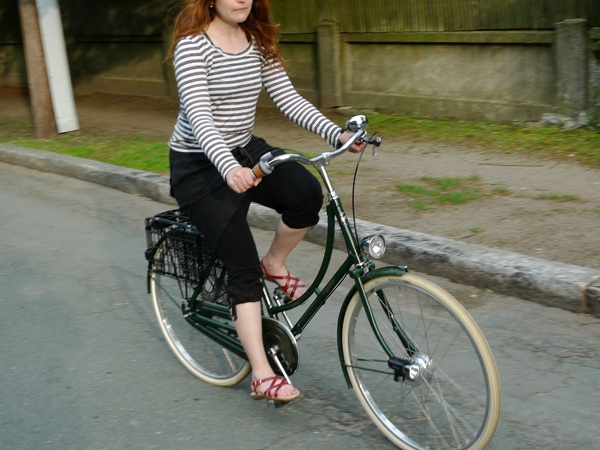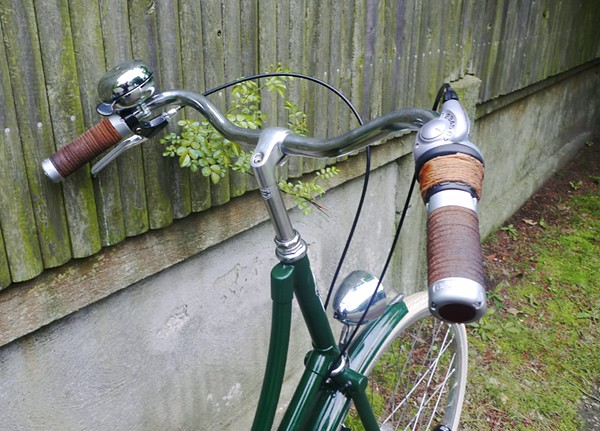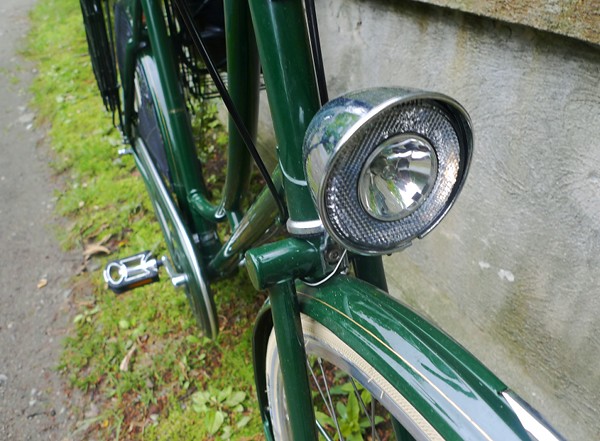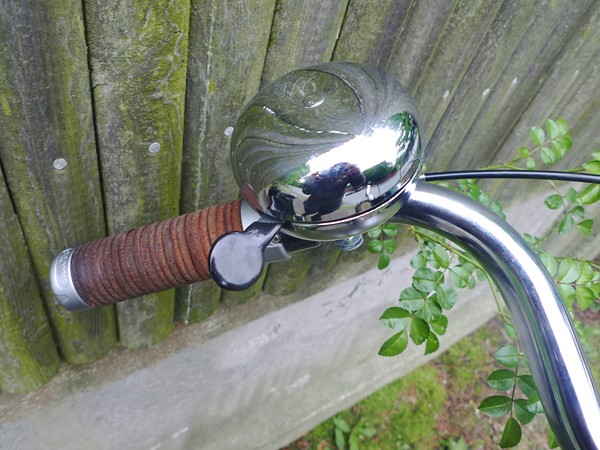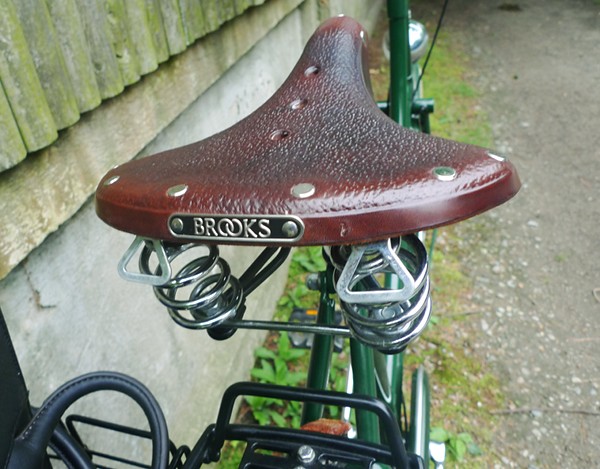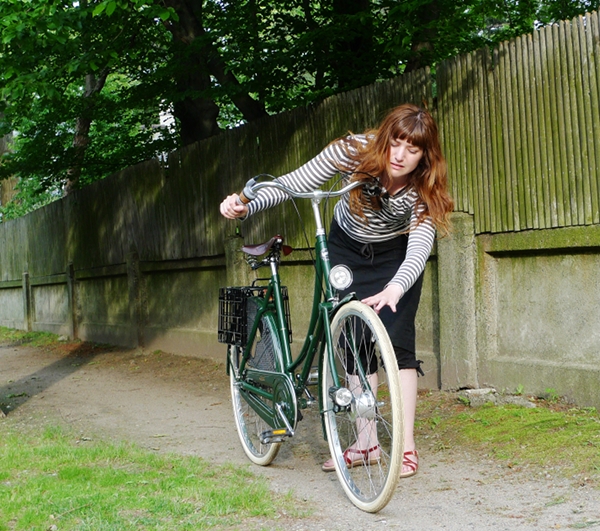Bicycles for Everyday
 I believe that bicycles meant for everyday transportation should not require us to change the way we dress or lead our lives in order to ride them. Ultimately, an effective transportation bike is one that not only gets the job done, but allows the cyclist to be themselves while feeling comfortable and safe.
I believe that bicycles meant for everyday transportation should not require us to change the way we dress or lead our lives in order to ride them. Ultimately, an effective transportation bike is one that not only gets the job done, but allows the cyclist to be themselves while feeling comfortable and safe. Our notions of personal comfort and aesthetics differ, and so will our bicycle preferences. What's important is to find what works for you. In my daily life, I tend to wear skirts, dresses and suits. I carry a large briefcase-like bag for work. I live in Boston and ride year-round. And I travel up to 10 miles each way on flat to mildly hilly terrain. The bicycle I ride for transportation must accommodate all this in order to be useful to me. Below are the features worth considering if you are new to cycling and share my priorities.
Upright Sitting Position
Bicycles are made with different frame geometries and handlebar set-ups. When riding for transportation in my regular clothing, I prefer to sit upright rather than hunched over. The upright sitting position is more comfortable, enables the rider to observe their surroundings, and makes the rider visible to traffic.
Step-through Frame
A step-through frame bicycle makes it easy to cycle in skirts and dresses. It also allows for easy mounting and dismounting of the bicycle. No need to swing your leg, no need to lean the bicycle, no need to worry about losing your balance in traffic. Just step through. See here for a description of different types of step-through frames.
Quality Steel Construction
In general, steel frames are sturdier and make for a smoother ride than frames made of other materials. Especially if you live in an area with very bumpy roads or cobblestones, a steel bicycle will feel better to ride.
Swept-back Handlebars
Traditional swept-back handlebars (sometimes called "North Road bars") are comfortable to hold and allow an upright sitting position.
Enclosed Chain
When the chain is encased in a protective cover, the bottoms of your trousers are safe from getting caught in the chain or getting ruined by oil stains. The chaincase also keeps your bicycle chain free from grime. See here for more about the chaincase.
Fenders
Placed over the tires, fenders prevent clothing from getting splashed by mud.
Dress Guards
Also called skirt guards or coat guards, these are inserts that cover a portion of the rear wheel, protecting loose clothing from getting caught in the spokes. Dress guards can be made in many different ways and of different materials, including solid plastics, nylon fabrics, metal weaves, and rope crochet. Read more about dress guards here, and visit the Dress Guards group on flickr.
Racks
Installing a rack on a bicycle transforms it into a transport vehicle, making it possible to attach a variety of baskets, saddle bags and panniers - which can be used to carry handbags, books, groceries, art supplies, and whatever else your heart may desire.
Gearing
An internal hub with 3-8 speeds should be perfect for a transport bike in most locations. I would not recommend derailleur gearing for a city bike that you plan to ride in nice clothing. Hub gears are cleaner and simpler, making them easier to maintain and reducing the chance of something breaking in the midst of your peaceful daily ride. Keep in mind also, that only with hub gearing can you install a full chain cover and coaster brake on your bicycle.
An internal hub with 3-8 speeds should be perfect for a transport bike in most locations. I would not recommend derailleur gearing for a city bike that you plan to ride in nice clothing. Hub gears are cleaner and simpler, making them easier to maintain and reducing the chance of something breaking in the midst of your peaceful daily ride. Keep in mind also, that only with hub gearing can you install a full chain cover and coaster brake on your bicycle.
Brakes
Front and rear brakes are essential for comfortable, stress-free cycling. My personal preference is a combination of coaster brake (activated by pedaling backwards) and front drum brake. Hub brakes (inside the hub) are a better choice than caliper brakes (on the wheel rim), because the former are not effected by rain or snow.
Lights
Lights are absolutely necessary when it is dark. It's for your safety, as well as the law in many states. In Massachusetts, it is illegal to cycle without lights from sunset till sunrise. I prefer hub dynamo-generated lighting, which is powered by the cyclist's pedaling motions and does not require batteries.
Bell
A loud bell lets you warn pedestrians and other cyclists when you are about to pass them, and can alert a car to your presence.
Leather Saddle
With a leather saddle, your "soft tissue" (buttocks and the other bits) will hurt less at the end of the day. A padded vinyl saddle may feel better in the store, but I guarantee that won't be the case after a couple of miles!
Colour, Aesthetics, Je Ne Sais Quoi...
Some think it is silly to be overly concerned with a bicycle's colour or looks, but I am all for it. If you are going to ride your bicycle every day, it is only natural to get one that you absolutely love. Ride and enjoy!

